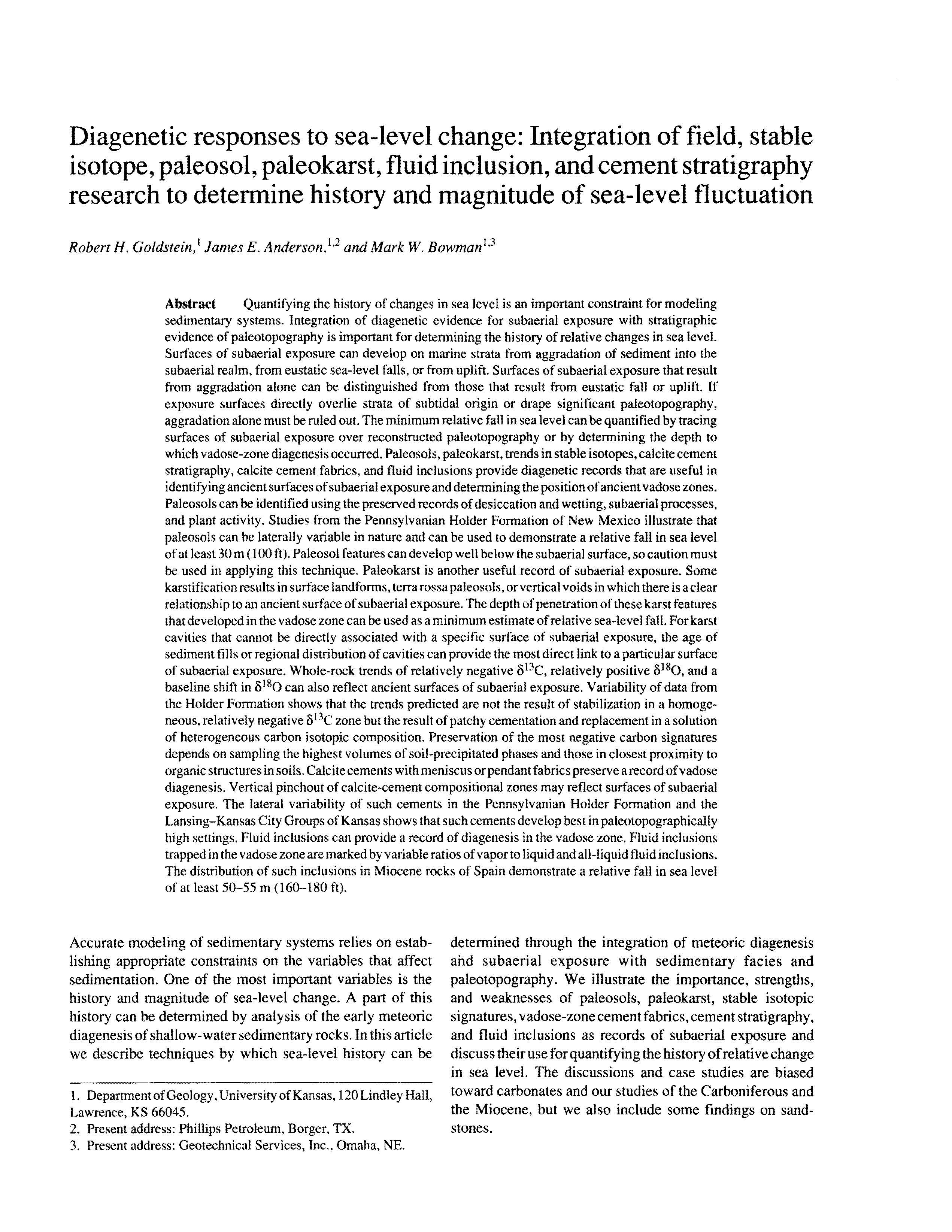Diagenetic responses to sea-level change: Integration of field, stable isotope, paleosol, paleokarst, fluid inclusion, and cement stratigraphy research to determine history and magnitude of sea-level fluctuation
DOI:
https://doi.org/10.17161/kgsbulletin.no.233.20454Abstract
Abstract Quantifying the history of changes in sea level is an important constraint for modeling sedimentary systems. Integration of diagenetic evidence for subaerial exposure with stratigraphic evidence of paleotopography is important for determining the history of relative changes in sea level. Surfaces of subaerial exposure can develop on marine strata from aggradation of sediment into the subaerial realm, from eustatic sea-level falls, or from uplift. Surfaces of subaerial exposure that result from aggradation alone can be distinguished from those that result from eustatic fall or uplift. If exposure surfaces directly overlie strata of subtidal origin or drape significant paleotopography, aggradation alone must be ruled out. The minimum relative fall in sea level can be quantified by tracing surfaces of subaerial exposure over reconstructed paleotopography or by determining the depth to which vadose-zone diagenesis occurred. Paleosols, paleokarst, trends in stable isotopes, calcite cement stratigraphy, calcite cement fabrics, and fluid inclusions provide diagenetic records that are useful in identifying ancient surfaces of subaerial exposure and determining the position of ancient vadose zones. Paleosols can be identified using the preserved records of desiccation and wetting, subaerial processes, and plant activity. Studies from the Pennsylvanian Holder Formation of New Mexico illustrate that paleosols can be laterally variable in nature and can be used to demonstrate a relative fall in sea level of at least 30 m (100 ft). Paleosol features can develop well below the subaerial surface, so caution must be used in applying this technique. Paleokarst is another useful record of subaerial exposure. Some karstification results in surface landforms, terra rossa paleosols, or vertical voids in which there is a clear relationship to an ancient surface of subaerial exposure. The depth of penetration of these karst features that developed in the vadose zone can be used as a minimum estimate of relative sea-level fall. For karst cavities that cannot be directly associated with a specific surface of subaerial exposure, the age of sediment fills or regional distribution of cavities can provide the most direct link to a particular surface of subaerial exposure. Whole-rock trends of relatively negative δ13C, relatively positive δ18O, and a baseline shift in δ18O can also reflect ancient surfaces of subaerial exposure. Variability of data from the Holder Formation shows that the trends predicted are not the result of stabilization in a homogeneous, relatively negative δ13C zone but the result of patchy cementation and replacement in a solution of heterogeneous carbon isotopic composition. Preservation of the most negative carbon signatures depends on sampling the highest volumes of soil-precipitated phases and those in closest proximity to organic structures in soils. Calcite cements with meniscus or pendant fabrics preserve a record of vadose diagenesis. Vertical pinchout of calcite-cement compositional zones may reflect surfaces of subaerial exposure. The lateral variability of such cements in the Pennsylvanian Holder Formation and the Lansing-Kansas City Groups of Kansas shows that such cements develop best in paleotopographically high settings. Fluid inclusions can provide a record of diagenesis in the vadose zone. Fluid inclusions trapped in the vadose zone are marked by variable ratios of vapor to liquid and all-liquid fluid inclusions. The distribution of such inclusions in Miocene rocks of Spain demonstrate a relative fall in sea level of at least 50-55 m (160-180 ft).
Downloads

